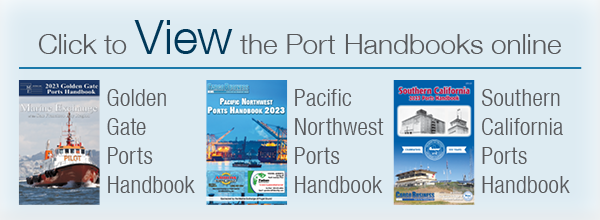|
By William DiBenedetto, CBN Feature Editor
The votes are in and it’s pretty much official: shippers, carriers and terminals would like to see the United Nation’s container weight verification rules—scheduled to take effect July 1—to just go away.
Mis-declaration of container weights has been a hot topic for many years; it’s probably responsible for many accidents and was implicated in the sinking of the MSC Napoli in 2007. That’s because even one overweight or badly loaded container can have a huge impact on others once loaded on a container vessel. Erroneous weights can also lead to incidents on land, including trucking accidents and overweight cargo falling through the container bottoms.
Some 600 containers are washed overboard due to weight or loading discrepancies each year, according to official estimates, but that number might be much larger. In addition, the International Cargo Handling Coordination Association (ICHCA) has estimated that up to 20 percent of containers are mis-declared.
Last year the International Maritime Organization (IMO) amended the Safety of Life at Sea Convention (SOLAS) to require, as a condition for loading a packed container onto a ship for export, that the container have a verified weight – known as VGM (for verification of gross mass). It is up to the shipper to handle the weight verification. After July 1, it will be a violation of SOLAS to load a packed container onto a vessel if the vessel operator and marine terminal operator do not have a verified container weight. Without it, the container can’t be loaded aboard the vessel.
There are two methods in which the shipper can obtain the verified gross mass of a packed container:
- Method 1 – Upon the conclusion of packing and sealing a container, the shipper may weigh, or have arranged that a third party weigh, the packed container.
- Method 2 – The shipper or, by arrangement of the shipper, a third party may weigh all packages and cargo items, including the mass of pallets, dunnage and other packing and securing material to be packed in the container, and add the tare mass of the container to the sum of the single masses of the container’s contents.
Regarding both methods, SOLAS says the weighing equipment used must meet the applicable accuracy standards and requirements of the country in which the equipment is being used. Shippers, freight forwarders, vessel operators, and terminal operators will all need to establish policies and procedures to ensure the implementation of this regulatory change.
And therein lies the rub – because there isn’t much clarity on how to implement those "policies and procedures." It can get pretty complicated. For example, while the rule says the shipper is responsible for providing the verification – who exactly is the shipper? Due to the complexity of the international supply chain, an entity identified as the "shipper" on the bill of lading might not have direct or physical control over key elements of the VGM weighing process.
SOLAS does not mandate any particular form of
|

communication between the parties exchanging the verified gross mass information. Also, is the carrier or terminal operator obligated to check the value given for the gross mass by the shipper and report to the authorities any discrepancy that may be found? Is there a margin of error? And because there is no single international standard covering weighing equipment, does this mean that different standards will be applied around the world?
Most importantly, how will this mandatory rule be enforced? SOLAS says that as a "national" issue, fines and other penalties will be imposed under national legislation. But there’s also a commercial issue in play. Penalties may involve repacking costs, administration fees for amending documents, demurrage charges, and delayed or cancelled shipments. The U.S. Coast Guard said it will not act as the enforcer, so will each port have to enforce the rule? They aren’t too keen on that idea, and few container terminals worldwide are jumping in to provide weighing services for shippers; so far the Port of Charleston is the only one in the U.S. to say it might.
At a recent meeting before the Federal Maritime Commission the U.S. Agricultural Transportation Coalition reiterated its opposition to the rules, asserting that U.S. shippers will be disadvantaged when the rules come into force. "Our current method of reporting weights to the carriers has been accepted by the industry and compliant with SOLAS for the past 22 years," AgTC said. "There is no need for change."
Shippers said that under the new regulation, they will be required to supply the tare weight along with the weight of any packed goods and dunnage. "A shipper should only be responsible for their gross cargo weight. A shipper should not be required to certify the weight of equipment (the container), which is owned or leased by the steamship line."
AgTC said the rule should be delayed and reexamined by individuals familiar with the export supply chain process. If not, the SOLAS Amendment "will require a costly and unnecessary redesign of the supply chain," "disrupt the flow of cargo through ports," and cause turmoil at marine terminals and be a significant impediment to U.S. exports.
Drewry Supply Chain Advisors noted that some supply chains are almost certain to suffer significant disruption when the VGM rules come into force in July, adding there could be a late June surge in shipment volumes.
The consultancy said that while some shippers had made preparations, many others were unlikely to be ready to meet their new obligations. "We are seeing some progress, but equally it is becoming clear that not all shippers will be ready to comply with the new IMO rule," said Drewry.
|





